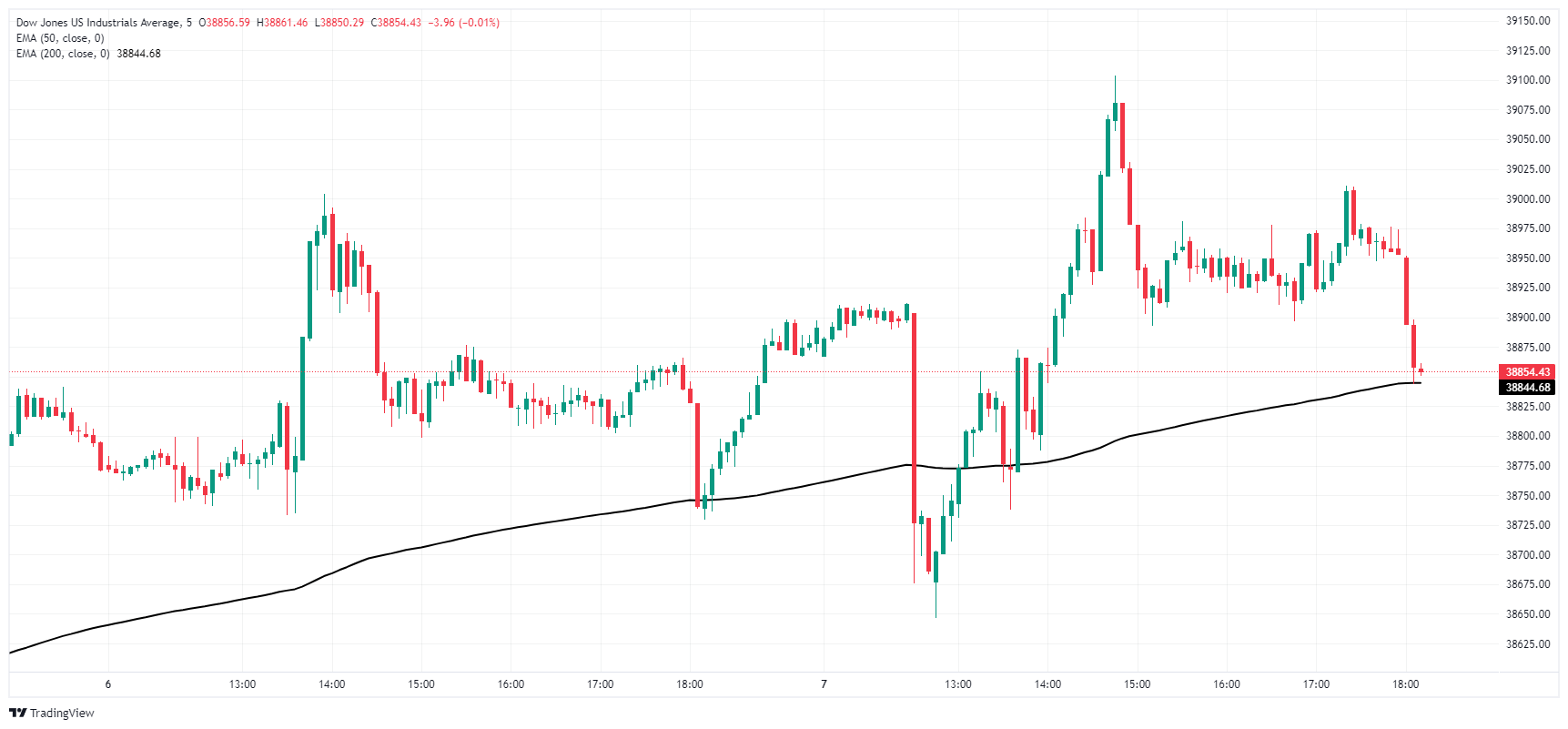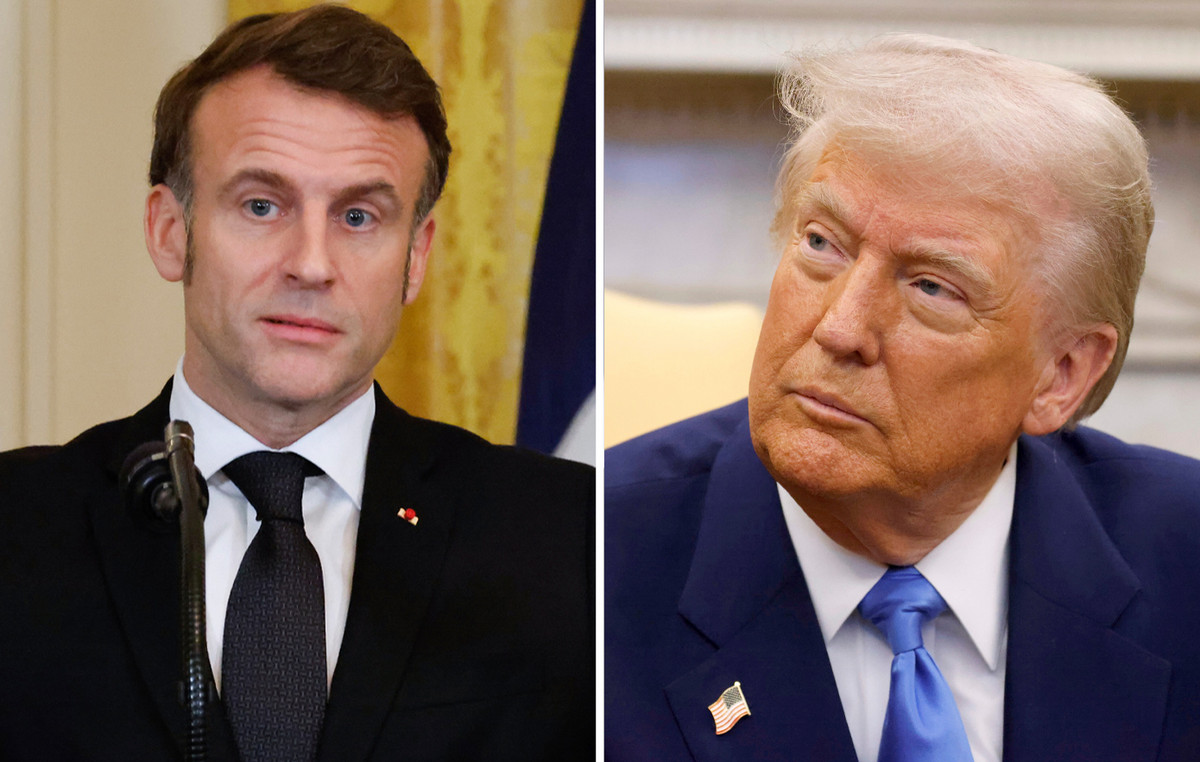- Dow Jones stabilizes as investors dismiss bets on rate cuts.
- The US added 272,000 net new jobs in May.
- U.S. wages also rose faster than expected, dashing hopes for rate cuts in September.
The Dow Jones Industrial Average (DJIA) shrugged off a forecast-beating Nonfarm Payrolls (NFP) report on Friday, briefly rising 0.2% during the US market session before falling back to the day’s opening bids following a reactive fall due to better than expected job additions in May.
US Nonfarm Payrolls delivered its third-best monthly net jobs gain on Friday, adding 272,000 new jobs in May, well above the forecast of 185,000. The figure far exceeded that of the previous month, which was revised slightly downward to 165,000 from 175,000.
Average hourly earnings in the US also rose faster than expected, showing wages rising 0.4% month-on-month versus the forecast of 0.3% and 0.2% previously. Meanwhile, the US unemployment rate also rose to its highest level since February 2022, standing at 4.0% versus the expected 3.9%.
With the US economy continuing to outperform investor expectations, the overall market hopes for Federal Reserve (Fed) rate cuts continue to take a hit. According to CME’s FedWatch tool, rates traders are now pricing in just a 51% chance of at least a quarter-point cut by the Fed on September 8, significantly below the 70% chance that were valued until just before Friday’s NFP report.
Dow Jones News
After some initial post-NFP jitters, the DJIA is making a strong recovery on Friday. Two-thirds of the main index’s constituent stocks are up on the day, with gains led by 3M Co. (MMM), which is up about 3% in Friday trading. 3M stock was recently upgraded to a “buy” by Bank of America analysts, prompting investors to do just that. 3M surpassed $100 per share on Friday and is up nearly 12% so far this year.
On the downside, Unitedhealth Group Inc. (UNH) fell -1.8% on Friday, falling to $493.00 per share. UNH is down about -6.25% from the mid-May peak near $525.00 per share, and Friday’s stock prices are losing more weight following the announcement of a shareholder lawsuit against the company for alleged losses resulting from of securities fraud committed by the healthcare company between March 2022 and February 2024.
Dow Jones Technical Outlook
The Dow Jones tested the 39,000.00 area in an intraday rally on Friday, but fell back to the day’s opening range near 38,880.00. The index is holding steady after recent bids for a recovery from a short-term low at the 38,000.00 level, but Friday is shaping up to be another soft day to close out the trading week.
The Dow Jones continues to fluctuate after falling from all-time highs above 40,000.00, and still remains -3% below record peaks in May. A firm demand zone is valued between 38,000.00 and 37,500.00, and the main equity index continues to trade deep in bullish territory above the 200-day EMA at 37,299.82.
Dow Jones Five Minute Chart
Dow Jones Daily Chart
The Dow Jones
The Dow Jones Industrial Average, one of the world’s oldest stock indices, is made up of the 30 most traded securities in the United States. The index is weighted by price rather than capitalization. It is calculated by adding the prices of the securities that comprise it and dividing them by a factor, currently 0.152. The index was founded by Charles Dow, also founder of the Wall Street Journal. In recent years it has been criticized for not being sufficiently representative, since it only follows 30 companies, unlike broader indices such as the S& P 500.
There are many factors that drive the Dow Jones Industrial Average (DJIA). The main one is the aggregate performance of its component companies, revealed in quarterly corporate earnings reports. US and global macroeconomic data also contribute, influencing investor sentiment. The level of interest rates, set by the Federal Reserve (Fed), also influences the DJIA, as it affects the cost of credit, on which many companies largely depend. Therefore, inflation can be a determining factor, as well as other parameters that influence the decisions of the Federal Reserve.
The Dow Theory is a method for identifying the main trend of the stock market developed by Charles Dow. A key step is to compare the direction of the Dow Jones Industrial Average (DJIA) and the Dow Jones Transportation Average (DJTA) and only follow trends where they are both moving in the same direction. Volume is a confirmation criterion. The theory uses elements of maximum and minimum analysis. The Dow theory proposes three phases of the trend: accumulation, when the smart money begins to buy or sell; public participation, when the general public joins the trend; and distribution, when the smart money abandons the trend.
There are several ways to trade the DJIA. One of them is to use ETFs that allow investors to trade the DJIA as a single security, instead of having to buy shares of the 30 companies that comprise it. A prominent example is the SPDR Dow Jones Industrial Average ETF (DIA). Futures contracts on the DJIA allow traders to speculate on the future value of the index, and options provide the right, but not the obligation, to buy or sell the index at a predetermined price in the future. Mutual funds allow investors to purchase a portion of a diversified portfolio of DJIA securities, providing exposure to the global index.
Source: Fx Street
I am Joshua Winder, a senior-level journalist and editor at World Stock Market. I specialize in covering news related to the stock market and economic trends. With more than 8 years of experience in this field, I have become an expert in financial reporting.







